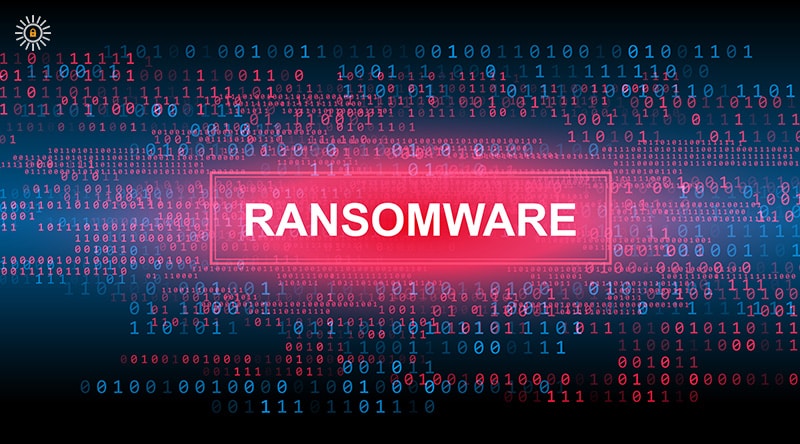- February 28, 2023
- Tags:

The globalization of the internet and the increased usage of intelligent devices have revolutionized how we work, communicate, and process information. But as technology has become more advanced, so too have the associated risks. The internet has become a breeding ground for cybercriminals using advanced techniques and tools to exploit vulnerabilities across digital infrastructures. Their goal is often corporate espionage, operational disruption, phishing scams, or other malware infections like advanced ransomware attacks, which can directly impact business continuity.
This article discusses the top ransomware-causing threats expected to cause digital mayhem for small and medium-sized businesses (SMBs) in 2023, their propagating elements, and the benefits of involving a third-party cybersecurity advisory firm in the ransomware risk assessment process.
Ransomware-Causing Threats
Ransomware is typically spread through several tactics, techniques, and procedures (TTPs), including email phishing, infected websites, or software supply chain vulnerabilities. Once a ransomware code infects a system, it can quickly spread throughout an organization’s network, infecting all connected devices. However, one of the most significant challenges associated with ransomware is the difficulty of identifying and tracking the attackers, whose TTPs vary in sophistication.
Two top ransomware-causing threats in 2023 are data breaches and cybercrime; these threats are not necessarily novel, but they leverage social engineering, unpatched vulnerabilities, remote desktop protocol (RDP) attacks, lack of threat intelligence, and poor security awareness training. However, with the rise of AI capabilities, ransomware actors are not slowing down; enhancements to attack speed, accuracy, precision, and the democratization of ransomware infrastructures will add layers of sophistication to data breach and cybercrime incidents in 2023.
Therefore, we expect to see a rise in the use of paid and open-source AI-powered tools to enhance TTPs and attack chains, including the propagation of infected systems across a targeted network. Above all, the top ransomware-causing threat in 2023 is becoming rogue AI.
Leveraging Cybersecurity Advisory Firms
Ransomware attacks have become a significant challenge in our modern cyber threat landscape; they have grown in complexity and sophistication, making it difficult for most organizations to defend against them. Unfortunately, the consequences of ransomware-causing threats like data breaches and cybercrime can result in significant financial losses, reputational damage, and legal penalties for SMBs already short on resources.
As a result, more and more organizations are turning to third-party cybersecurity advisory firms to help provide a fresh perspective on an organization’s security posture and combat these growing threats.
Below are some benefits of leveraging a cybersecurity advisory firm during and after a ransomware incident:
- Rapid response and expertise: A cybersecurity advisory firm can respond quickly to a ransomware attack, assess the extent of the damage, and help develop a plan to mitigate the threat. They have the expertise and experience to guide an organization through the recovery process’s technical, legal, and operational aspects. A quick and well-coordinated response can minimize the damage and prevent a complete system shutdown.
- Minimize downtime: Ransomware attacks can result in significant downtime, leading to lost productivity and revenue. A cybersecurity advisory firm can provide rapid responses to reduce downtime and restore operations. They can also help the organization implement temporary workarounds, such as using backup systems or cloud services, to keep the business operational until a full recovery can occur.
- Identify and mitigate future threats: Cybersecurity advisory firms can assess an organization’s security posture and help develop and implement measures to reduce vulnerabilities, improve its overall security hygiene, and reduce the risk of future incidents.
- Preserve and recover data: Data is a critical asset for any organization, and a ransomware attack can result in significant data loss. A cybersecurity advisory firm can help organizations preserve and recover data by implementing backup and recovery solutions. They can also help to negotiate with the attackers to retrieve encrypted data and restore it to its original form.
- Legal and regulatory compliance: A ransomware attack can have legal and regulatory consequences, such as data breach notification requirements and financial penalties. A cybersecurity advisory firm can help navigate the legal and regulatory landscape and ensure that the organization complies with applicable laws and regulations.
Conclusion
The rise of AI and other advanced threats is enhancing attack speed, accuracy, and precision, highlighting the need for organizations to take proactive steps in improving their security posture in today’s digital landscape. One of these steps is to leverage the expertise of third-party cybersecurity advisory firms, which can provide a rapid response, minimize downtime, identify and mitigate future threats, preserve and recover data, and ensure legal and regulatory compliance.
By working with a cybersecurity advisory firm, organizations can protect themselves from the negative consequences of ransomware attacks, preserve their reputation, and continue to operate with minimal disruption. So please don’t wait until it’s too late; act now to protect your organization’s reputation and ensure business continuity in the face of evolving cyber threats.








